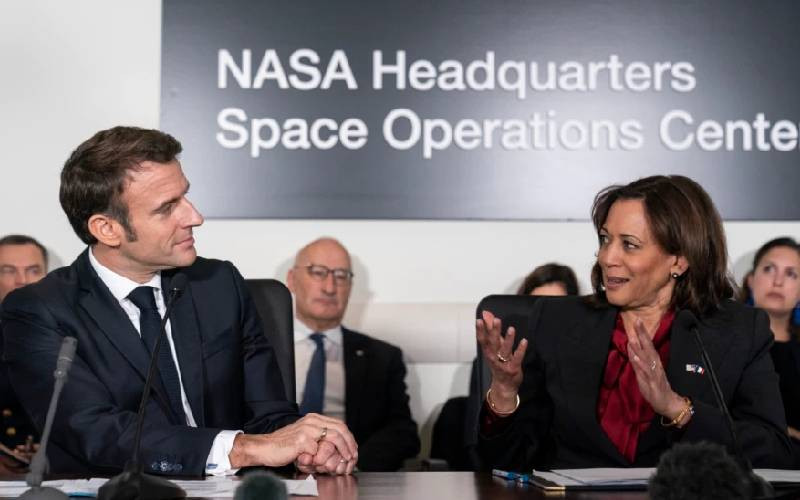×
The Standard e-Paper
Kenya's Bold Newspaper

French President Emmanuel Macron, left, and Vice President Kamala Harris meet at NASA headquarters in Washington, Nov. 30, 2022. [VOA Photo]
A Franco-U.S. satellite is due for launch this week on a mission to survey with unprecedented accuracy nearly all water on Earth's surface for the first time and help scientists investigate its impact on Earth's climate.